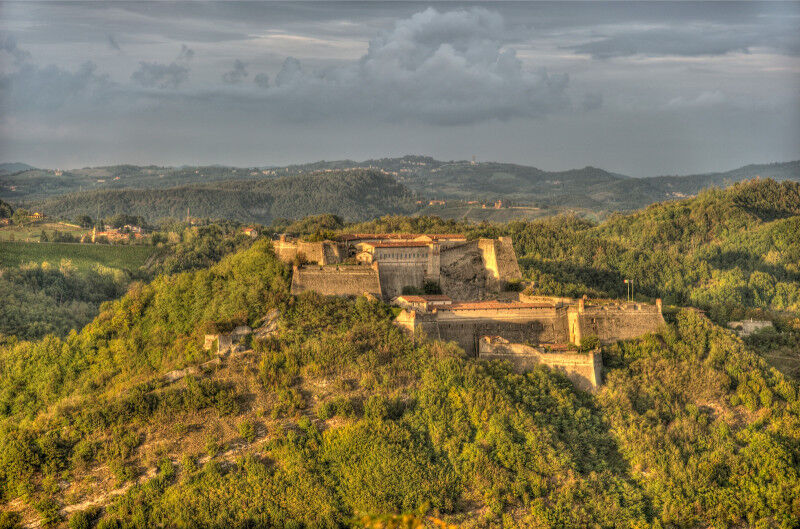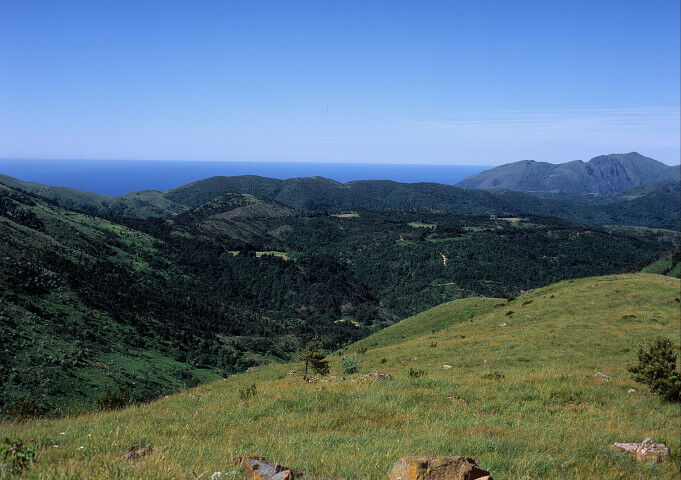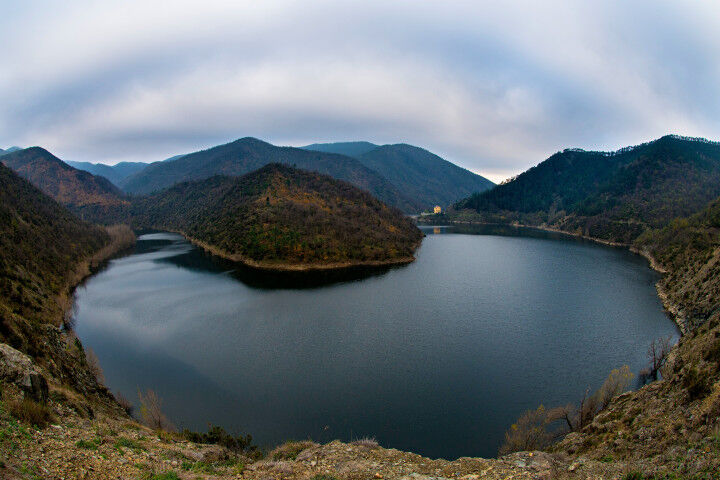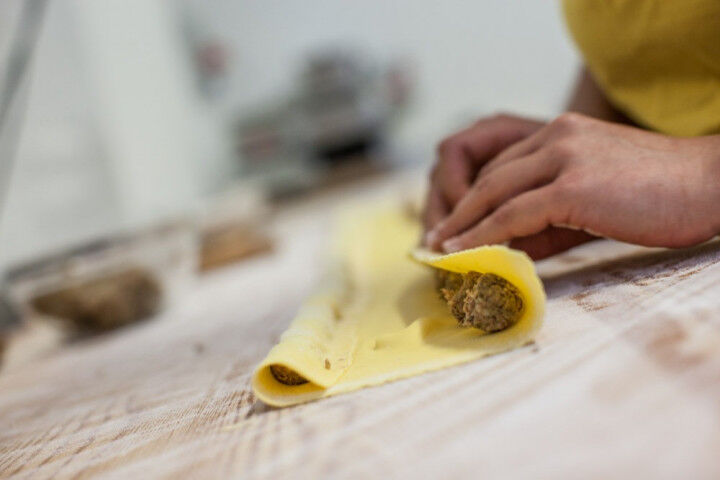Come see what to do, what places are the best for local food and drink, and where to stay in Gavi.
We find ourselves in the Alto Monferrato area located in the Val di Lemme. This region can be found approximately 35 kilometers south of the city of Alessandria, in an area fabled for its rolling hills and meandering rivers. The area is connected to the Ligurian Riviera by the Rocchetta Pass (772m of altitude), one of the area’s traditional links between the Po Valley and Genova.
The Gavi DOCg appellation covers all or part of the 11 municipalities of the Province of Alessandria: Bosio, Capriata d'Orba, Carrosio, Francavilla Bisio, Gavi, Novi Ligure, Parodi Ligure, Pasturana, San Cristoforo, Serravalle Scrivia, Tassarolo.
A amazing white wine from piedmont’s Gavi area
- Our top 10 Gavi wine producers: La Chiara, La Giustiniana, La Raia, La Scolca, Marchese Raggio, Bruno Broglia, La Ghibellina, La Mesma, Morgassi Superiore, Nicola Bergaglio
- 3 welcoming accommodations where you can relax: Hotel Villa la Bollina, L’Ostelliere Monterotondo Resort, Relais Villa Pomela
- 3 restaurants where the local cuisine will leave a lasting impression: Ristorante Le Cantine del Gavi, Trattoria Pessenti, Osteria Piemontemare
Why should you check out piedmont’s southeastern corner, aka Gavi?
In this corner of the Piedmont region, the rhythm of life is one that we can get behind with joy: a plethora of chromatic shades and hues are expressed by the alternating colors of vivid vineyards and ploughed earth. The dottings of woods and streams are the icing on the cake of this visual feast.
The prominent silhouettes of the Ligurian Apennines encircle the land, giving rise to an alternating landscape of hills and valleys. The presence of the Apennines creates a feeling of an ancient theatre, with incredible views of the plains and depths of the distant Alps.
So a land of passage but not border, between the Po Valley and the Alps, where culture, art, architecture and gastronomy are divided peacefully between Piedmont and Liguria. This strip of northern Italian land sandwiched between the Apennines and the Ligurian Sea provides us with a glimpse at a noble territory. The Gavi area is perfectly off-the-beaten track, and is remarkably easy to access from the hubs of Milan, Genoa and Turin.
When to visit Gavi?
Any time is a good time, although of course, we do have a favorite time. In our opinion, autumn or spring offers the fullest variety of colors, hues, flavors, and last but not least, the most favorable climatic conditions.
Which visits and excursions to undertake?
The Great Fortress of Gavi and the ruins of Libarna Antica are two top-notch authentic gems, evidence of the Gavi area’s ancient, important past.
If you’re looking for a more active approach, the hiking and biking of the Val di Lemme area is an absolute must: with more than 80km stretching out before you, this path is perfect either by foot, bike, or even horseback. You’ll stroll through immense stretches of plains and rolling hillsides, as you admire evocative views.
As you explore the Val di Lemme area, you’ll be partaking and enjoying the natural landscapes and experiencing the holistic outdoors that create the roots of this region: streams, woods, and vineyards as far as the eye can see.
Which wineries to visit?
There are many wineries to visit, some of which are located on the grounds of impressive patrician villas. A strong recommendation comes from us for visits to: La Chiara, La Giustiniana, La Raia, La Scolca, La Meirana, Bruno Broglia, La Ghibellina, La Mesma, Morgassi Superiore and Nicola Bergaglio.
More about the amazing piedmontese white wine, Gavi docg
- Grape variety is 100% Cortese
- Soil conditions are marly, clayey limestone
- Vineyards extend for 1500 hectares
- Annual production is 13 million bottles, of which more than 80% are shipped and sold abroad
Grape variety
The Cortese grape has been a popular, easy-to-find grape in Piedmont for at least a century. It’s important to note however that its origins are not necessarily in Southern Piedmont where it’s still widely cultivated. It’s certain that the Cortese grape remains essentially a Piedmontese grape, particularly in the regions that face Liguria. Gavi itself might have been created solely to reply to the innumerable demands for white wine from the seafood restaurants of Liguria!
The Cortese grape is a small-sized grape tending towards plumpness, complete with a notably frosty skin. Cortese grapes are greenish yellow, with a lovely golden undertone when exposed to the sun.
This varietal works well with high, constant production cycles, and is highly adaptable to a variety of soil types as long as the soils are not overly humid or fertile. The Cortese grapes in fact, prefer dry climates with good hillside sun exposure.
Cortese grapes suffer strongly from powdery mildew attacks, and have a medium-to-late vegetative cycle. Harvests typically take place during the second half of September.
The Gavi docg characteristics
The DOCG "Gavi" or "Cortese di Gavi" refers to four types of white wine (still, sparkling, spumante and reserve). These four types share the following characteristics: a variable pale straw color with greenish reflections, leaning more towards golden hues as the wines age.
An elegant, delicate bouquet, with hints of fresh fruit and white flowers. Notes of citrus fruits and almonds also appear, making the wines more complex as they age.
The classic Gavi taste is dry, full, pleasantly fresh and harmonious. This is a wine with great finesse, evident fruity hints, and a slightly bitter aftertaste.
Why produce a white wine in piedmont?
Thanks to the deep bond Gavi and the Republic of Genoa share, the production of a terrific white wine in Piedmont is a reality.
The Gavi area has clearly inherited and integrated the flavors and cuisine of Genova into its own culinary patterns, expressing perfectly what can happen when the different lands of plans and seas meet.
This translates into a blend of lard and butter with olive oil, salt and pork, and many other mixtures of flavors unique to each region
The overlapping of autochthonous and traditional elements (mushrooms, chestnuts, aromatic herbs), present the foodie with unmistakable scents and flavors. You can also find this notion expressed in two of the area’s traditional products that are a must-try on any food lover’s bucket list: fresh ravioli and soft macaroon cookies.
Do you know the history of ravioli?
Italian ravioli are likely known internationally. It’s our guess that very few people know that the term "Raviolo" actually comes from the name of a Genoese family residing in Gavi in 1221. The family owned an inn, which is the literal birthplace of the "ravioli" we love today.
The area undoubtedly specializes in this most spectacular pasta selection, although the ravioli from Gavi are in a category of their own. Don’t miss the chance to enjoy ravioli "a culo nudo" (without seasoning, to better taste the aromas), just as the locals do. Pair your ravioli with a chalice of Gavi wine, and add the additional touch of Genoese meat sauce.
And we would be doing an injustice to the area if we didn’t mention the exquisite soft macaroons of Gavi. Last but not least, the fine chocolate products crafted in the Novi Ligure and Arquata Scrivia areas are a must-taste experience to include during your stay.
Where to eat and where to stay?
For a full selection of mouth-watering Gavi specialties, you won’t want to miss a spot of tasting at the Cantine del Gavi Restaurant, or the Trattoria Pessenti and Osteria Piemontemare.
Enjoy absolute relaxation and wellness in one of our favorite wine resorts in the area. Try the Hotel Villa La Bollina, L'Ostelliere Monterotondo Resort or the Relais Villa Pomela and see which one is your favorite!
What more could you want?



